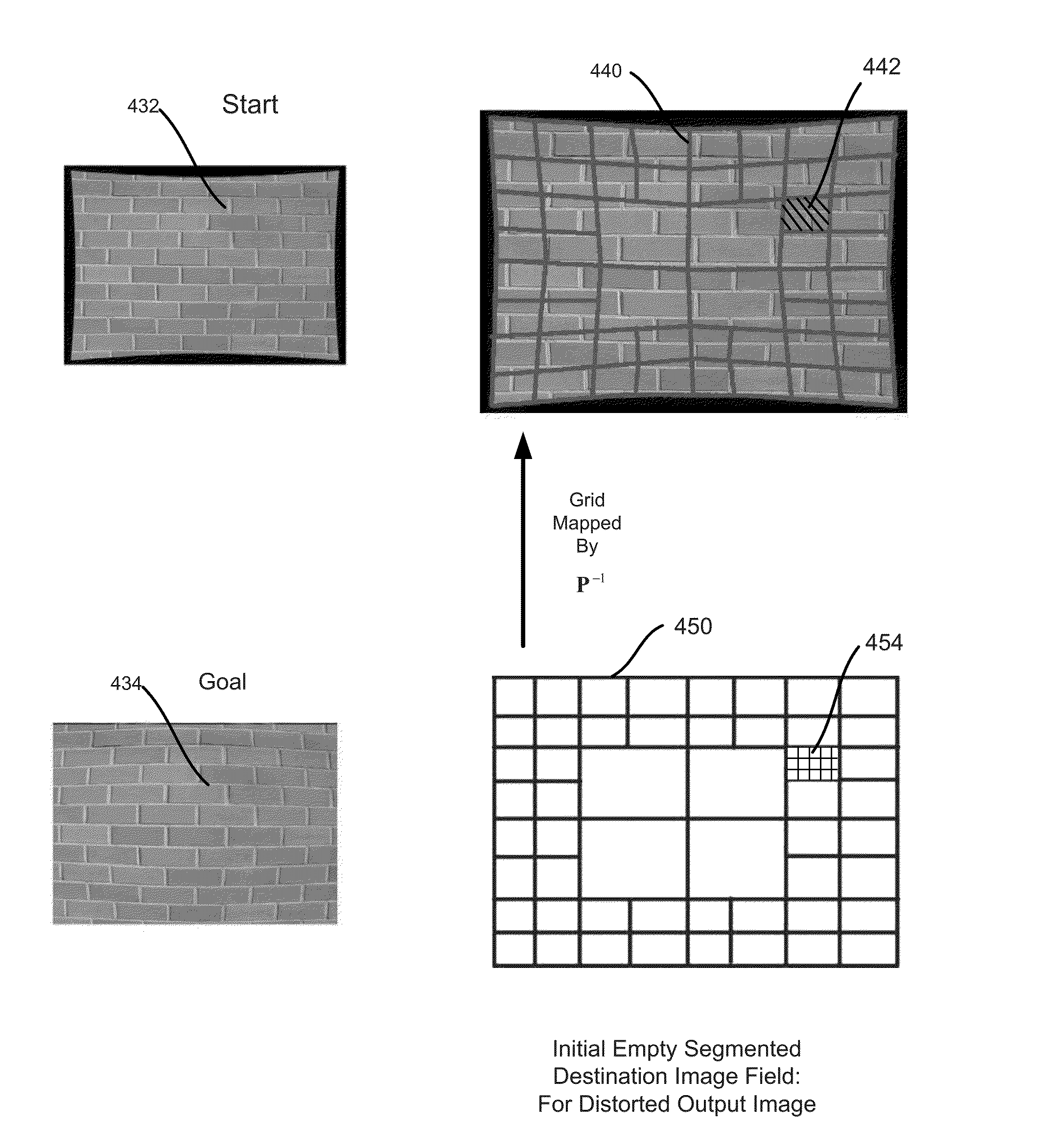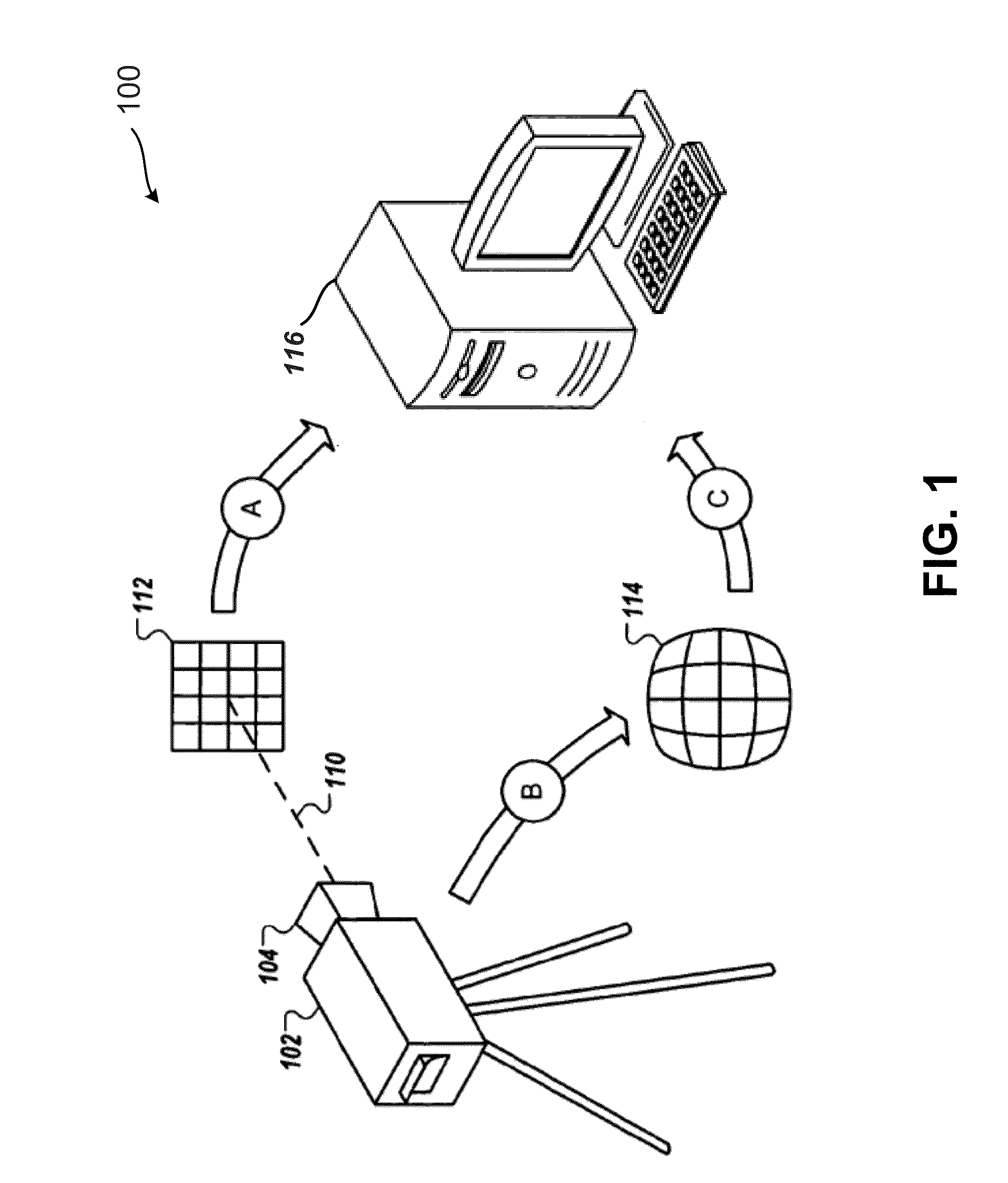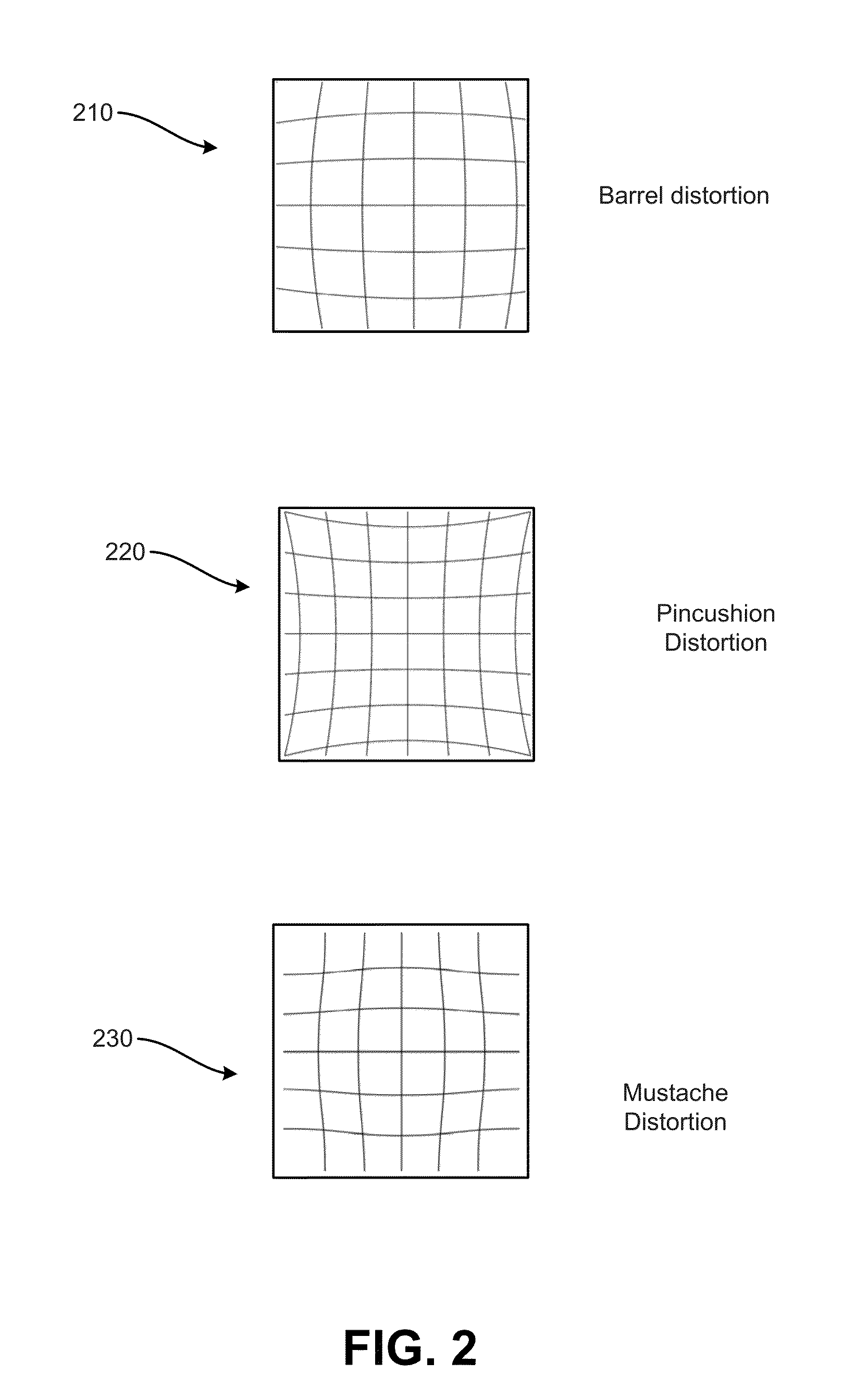Efficient lens re-distortion
a technology of redistortion and efficient lens, applied in image enhancement, instruments, television systems, etc., can solve the problems of large amount of computational resources and the need to re-distort input images, and achieve the effect of quick and efficient generation
- Summary
- Abstract
- Description
- Claims
- Application Information
AI Technical Summary
Benefits of technology
Problems solved by technology
Method used
Image
Examples
Embodiment Construction
I. Introduction
[0029]The following sections disclose exemplary embodiments for applying distortion to an image, such as when re-distorting or inverting, at least approximately, a previously corrected image. Section II gives information regarding image capture and the possible distortions that can arise. Additionally, methods for correcting such distortions are presented. Section III describes embodiments for applying distortion using a previously corrected source image to produce an output image by using a segmented rendered distortion image. Section IV describes additional and / or alternative embodiments for producing a segmented rendered distortion image and a quadtree data structure. Section V describes additional and / or alternative embodiments for applying a distortion. Section VI describes an exemplary computer system that may be used to implement the embodiments.
II. Origins of Image Distortion and Distortion Correction
[0030]FIG. 1 is a block diagram of an exemplary image proces...
PUM
 Login to View More
Login to View More Abstract
Description
Claims
Application Information
 Login to View More
Login to View More - R&D
- Intellectual Property
- Life Sciences
- Materials
- Tech Scout
- Unparalleled Data Quality
- Higher Quality Content
- 60% Fewer Hallucinations
Browse by: Latest US Patents, China's latest patents, Technical Efficacy Thesaurus, Application Domain, Technology Topic, Popular Technical Reports.
© 2025 PatSnap. All rights reserved.Legal|Privacy policy|Modern Slavery Act Transparency Statement|Sitemap|About US| Contact US: help@patsnap.com



